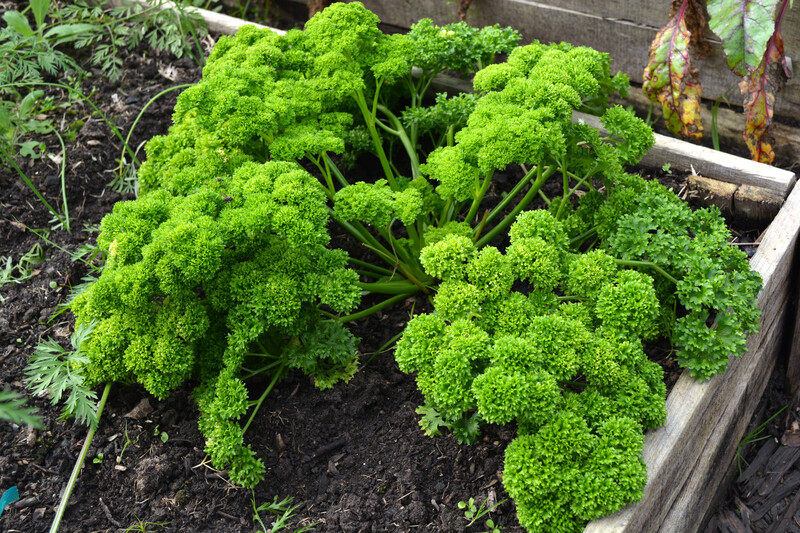Ways to Shield Your Garden from Intense Weather Conditions
Posted on 29/05/2025
Ways to Shield Your Garden from Intense Weather Conditions
Gardening is a rewarding pursuit, but it often comes with its fair share of challenges, especially when the weather turns wild. Whether you face scorching heat, torrential rain, biting frost, or strong winds, these extreme weather conditions can devastate your hard work within hours. To ensure your garden thrives all year round, it's essential to employ effective strategies to protect your garden from harsh weather events. This comprehensive guide will illuminate the most reliable and innovative ways to shield your garden from intense weather conditions, ensuring your plants not only survive but flourish.
Understanding How Severe Weather Affects Your Garden
Before diving into protective measures, it is critical to recognize how different weather extremes--heatwaves, frost, storms, drought, and heavy rainfall--impact your garden's ecosystem. Each intense weather pattern presents unique challenges:
- Heatwaves: Cause dehydration, scorched foliage, and sunburned fruit or vegetables.
- Frost: Damages or kills tender plants by freezing tissues and roots.
- Heavy Rain: Leads to waterlogged soil, root rot, and erosion.
- Windstorms: Tear leaves, break stems, and uproot young plants.
- Drought: Reduces soil moisture, making it hard for plants to absorb nutrients.
Understanding these impacts will help you select the most effective methods to defend your garden against unpredictable weather phenomena.

Top Ways to Shield Your Garden From Intense Weather
1. Build Strong Physical Barriers
- Windbreaks: Tall hedges, fences, or even strategically placed shrubs act as windbreaks, reducing wind speed and protecting delicate plants from being battered or uprooted. Consider planting fast-growing evergreens or constructing wooden slatted fences that allow air passage while reducing gust strength.
- Row Covers and Garden Fabric: Lightweight fabrics such as horticultural fleece or floating row covers can be draped over vegetable beds, offering protection from unexpected frosts, hail, and scorching sun.
- Cloches and Cold Frames: These mini-greenhouses shield seedlings and sensitive plants from late spring frosts, heavy rains, and chilling winds. Use glass or plastic covers to create a microclimate that encourages growth.
- Shade Cloths: During heatwaves, installing shade cloths over susceptible crops can drastically reduce sun stress. Choose 30-50% shade for vegetables and up to 70% for delicate ornamentals.
2. Smart Plant Selection
Choosing weather-resistant plants is a foundational approach to guarding your garden from climate extremes. Native plants have evolved to withstand local conditions, requiring fewer interventions.
- Drought-tolerant species: Lavender, sedum, and Russian sage survive prolonged dry spells.
- Flood-tolerant plants: Willow and elder thrive in wet soils or flood-prone areas.
- Frost-hardy varieties: Kale, pansies, and hellebores can largely withstand cold snaps.
- Wind-resistant plants: Grasses, hardy shrubs, and robust perennials offer flexibility and protection.
3. Improve Soil Structure for Resilience
Healthy, well-structured soil both absorbs heavy rainfall and retains moisture during dry spells. To fortify your garden's defense against severe weather, follow these practices:
- Compost and Mulch: Regularly add organic matter to enrich soil and improve its water retention. A 2-3 inch layer of mulch conserves moisture, keeps roots cool, and prevents topsoil erosion during storms.
- Raised Beds: These improve drainage in flood-prone gardens and warm up quicker in spring, offering extra defense against excess rain and mild frosts.
- Cover Crops: Use winter rye or clover during off-seasons. They anchor the soil, prevent erosion, and add nutrients, making your garden more resilient to extreme weather.
4. Smart Water Management
Water management is essential to protect your garden during droughts and downpours.
- Drip Irrigation Systems: They deliver moisture directly to roots, minimizing evaporation and runoff during dry periods.
- Rain Barrels: Collecting rainwater enables you to water your garden responsibly, especially during municipal restrictions or droughts.
- Trenches and French Drains: Redirect rainwater away from delicate beds and prevent soil saturation.
- Smart Watering Timing: Water early in the morning or late in the evening to reduce water loss from evaporation--critical during intense sun and heat.
5. Seasonal Preparation and Timing
Being proactive about seasonal transitions will help protect your garden from erratic weather events.
- Staggered Planting: Sowing seeds and transplants at intervals minimizes the risk of losing your entire crop to a single weather event.
- Early Harvest: In regions prone to early frosts or heavy autumn rains, harvest crops before severe weather sets in.
- Moveable Containers: Grow sensitive plants in pots or raised beds that can be relocated to sheltered spots when bad weather strikes.
Innovative Modern Solutions for Extreme Weather Gardening
1. Protective Greenhouse Structures
Greenhouses and polytunnels offer the ultimate protection against diverse weather threats. The controlled environment lets you extend growing seasons and shield delicate species from wind, frost, and intense sunlight. To adapt your greenhouse for extreme weather:
- Install Shade Netting: Prevent overheating during heatwaves.
- Add Storm Bracing: Reinforce frames to withstand high winds.
- Use Automatic Vents: Regulate temperature and humidity regardless of external conditions.
2. High-Tech Gardening Tools
Technology can help you monitor and protect your garden with precision:
- Weather Stations: Install garden weather monitors that alert you to sudden changes so you can respond quickly.
- Moisture Sensors: These devices track soil moisture levels, preventing under- or overwatering during extreme drought or rain.
- Mobile Apps: Use gardening apps for weather tracking, planting reminders, and tailored advice based on your microclimate.
3. Emergency Frost and Heat Protection Methods
- Frost Blankets: Keep lightweight, breathable covers on hand to drape over vulnerable plants on chilly nights.
- Thermal Water Jugs: Place large, black water containers in your garden when frost is forecast. They absorb heat during the day and release it at night, offering mild frost protection.
- DIY Shade Structures: Stretch old bedsheets or tarps over stakes to provide emergency shade to susceptible crops during sudden heatwaves.
Long-Term Garden Adaptations for Severe Weather
1. Planting for Protection
Design your layout to use taller plants and shrubs as natural shields for smaller, more vulnerable species. Interplanting with dense or resilient plants offers a buffer against wind and harsh sun, helping you safeguard your garden from weather extremes.
2. Soil Improvement for Consistency
Continually amend your soil with compost, organic matter, and mulches. *Healthy soil acts as a sponge--soaking up floods and releasing moisture during droughts.* Over time, this boosts your overall garden resilience.
3. Landscape Grading and Drainage
Level sloped areas or install swales (shallow trenches) to slow and direct rainwater flow. Effective grading prevents both waterlogging and topsoil loss during storms.
4. Utilizing Microclimates
Take advantage of small, naturally protected areas in your yard--against walls, under trees, or next to garden structures--where temperature and wind exposure are less severe. Plant the most sensitive specimens in these ideal spots to maximize their chances of thriving.
Common Pitfalls to Avoid When Protecting Gardens from Harsh Weather
- Neglecting Regular Maintenance: Ensure all barriers, covers, and irrigation systems are intact and ready for use before extreme weather hits.
- Ignoring Weather Warnings: Act swiftly upon receiving severe weather alerts--delays can mean the loss of crops or plants.
- Overprotecting: Avoid excessive shading or covering, which can create humidity, pest, and disease issues.
- Using Non-Breathable Covers: Always use breathable fabric for plant covers. Plastic without ventilation can cause overheating and suffocation.

FAQ: Shielding Your Garden from Intense Weather Conditions
Q: What is the best way to protect newly planted vegetables from an unexpected frost?
A: Use floating row covers, old blankets, or cloches overnight. Watering the soil beforehand can also help retain heat.
Q: Can mulching help during both drought and heavy rain?
A: Absolutely! Mulch retains soil moisture in drought and prevents rain-induced erosion and compaction.
Q: How do I know if my plants are sunburned?
A: Look for bleached, crispy, or scorched leaves--move affected plants into the shade if possible, or erect a temporary shade cloth.
Q: How often should I check my garden during extreme weather?
A: Inspect daily or even twice daily during prolonged heatwaves, storms, or frosts. Early intervention prevents lasting damage.
Conclusion: Keep Your Garden Safe Year-Round
Shielding your garden from intense weather conditions is an ongoing process of preparation, observation, and adaptation. By building barriers, using the right garden infrastructure, selecting resilient plants, enhancing your soil, and leveraging innovative technology, your garden can become a sanctuary that thrives in spite of whatever nature throws its way. Take proactive steps now--your future self and flourishing garden will thank you!
For more expert gardening advice and tips on how to weatherproof your garden, bookmark this guide and revisit whenever you face a fresh seasonal challenge!

